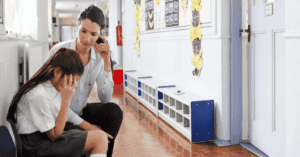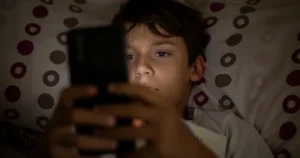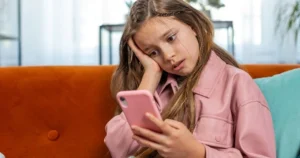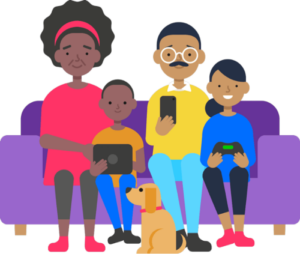Child-on-child or peer-on-peer abuse is when one child abuses another child of similar or different age. This can be physical or sexual in nature, occurring on or offline, and can include sharing nude images or violent content in addition to many other behaviuors. Smartphones are more commonplace now and so is online child-on-child abuse.
Expert and teacher Dr Tamasine Preece discusses the challenges teachers face when it comes to this type of behaviour and gives suggestions for what needs to be done to better support them.
What struggles do teachers face when it comes to online child-on-child abuse?
Ask any teacher and school leader to identify the greatest challenges with which they are faced as educators and high up on the list you’ll find mobile phones and social media. The use of mobile phones in schools and access to social media apps during and after the school day have transformed the landscape for adolescence, and hours on hours of teachers’ time is now spent supporting learners who have been victimised online. Regardless of whether the abuse takes place before or after school, in or out of lessons, disruption to the school community is significant. Staff and children are impacted by the loss of teaching and learning time as well as fractured relationships between peers, isolation and reduced wellbeing outcomes for the victimised child, and a strain on professionals such as the safeguarding and pastoral team and the community police.
Exploring identity, developing independence, challenging the world around them and negotiating relationships with peers are all key steps on the journey to successful adulthood. And yet aspects of social media have the ability to distort each of these key developmental behaviours into something that can be abusive and exploitative. However, children and young people often do not consider their online behaviours to be harmful, regarding them as not real. They don’t see that these actions have the same ability to cause distress as face-to-face encounters or physical or sexual violence.
When online abuse is brought to the attention of a teacher, they often then find themselves trying to navigate the distress of a child who has been harassed and/or abused alongside a perpetrator or group of perpetrators who have explained away their behaviour as banter, or justify it as free speech or fair comment. Sexual content or harassment is often construed as a normal part of a relationship or flirtation, perhaps an emulation of behaviours that have been normalised by pornography or online celebrity culture.
In many cases, it is not possible to identify the content creator, it often originating from an anonymous account; the staff member may then find themselves liaising between the child, their family, the authority safeguarding team and the police or even grappling with the social media site on behalf of the child, trying to have content taken down.
How could bodies outside of schools support teachers to effectively deal with online child-on-child abuse?
As well as the pressure that dealing with these incidences places on staff time, teachers are also required to keep abreast of developments in terms of social media and the wider digital landscape, including pornography, with which teachers are now faced. This includes understanding the subtleties related to each app and how content is constructed and then shared so as to address and mitigate the negative impact on the victim as effectively as possible.
Teachers and school leaders desperately need relevant training in order to do this as well as clear guidance related to relevant legislation to protect children and young people online. School community support agencies – including the police – should work with schools to develop guidance, provide relevant and up to date information about the internet and internet-mediated behaviours, and to promote clear pathways for the referral of victims of abuse online.






